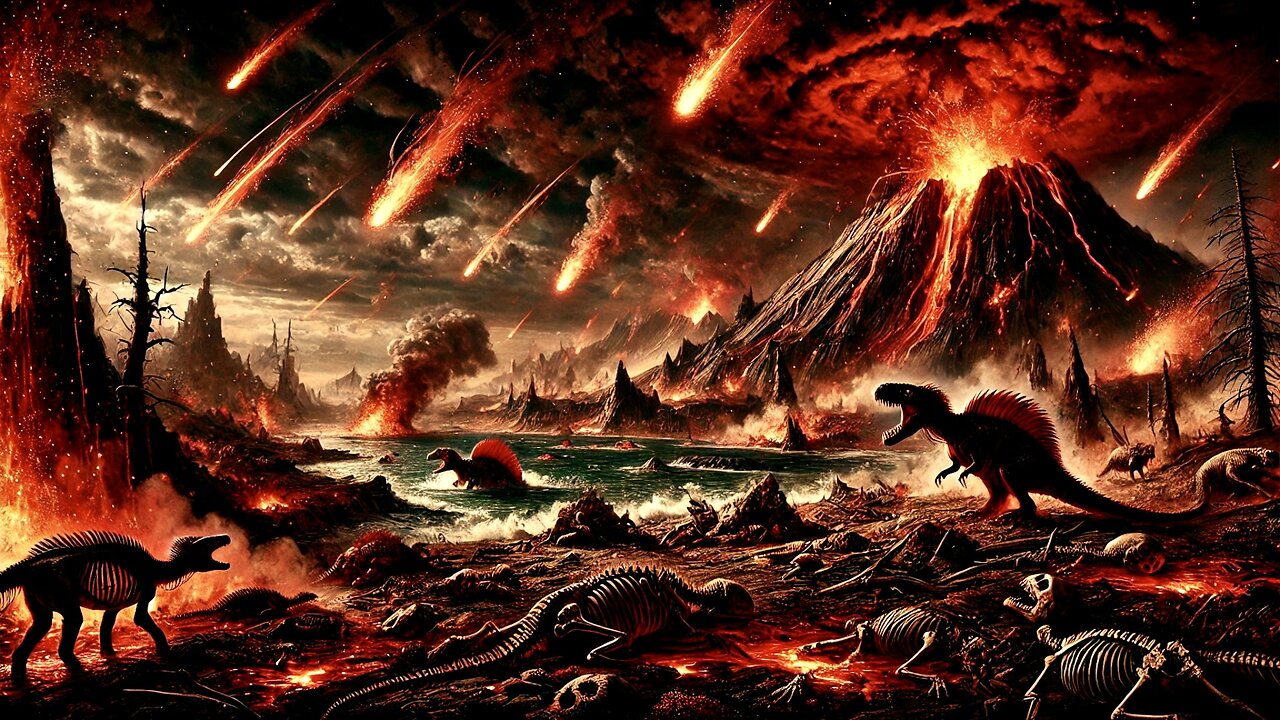Premium Only Content

Earth's Greatest Mass Extinction - Full Documentary
The Permian-Triassic extinction event, also known as the "Great Dying", was the largest mass extinction in Earth's history. It occurred about 252 million years ago. So, what exactly happened? A series of factors caused the extinction, including massive volcanic eruptions, global warming, and ocean acidification. The extinction wiped out more than 95% of all species, including most vertebrates. The extinction marked the end of the Permian period and the beginning of the Age of Dinosaurs
What caused the extinction?
Volcanic eruptions:
Released carbon dioxide into the atmosphere, which caused global warming and ocean acidification
Ocean acidification:
Made the oceans toxic and fatal to much marine life
Lack of oxygen:
Caused large-scale deoxygenation of the oceans
Metal and sulfide poisoning:
Caused widespread poisoning of the oceans
What did the extinction lead to?
A revolution in ecosystems, with birds and mammals becoming dominant over amphibians and reptiles.
Approximately 251.9 million years ago, the Permian–Triassic (P–T, P–Tr) extinction event (PTME; also known as the Late Permian extinction event, the Latest Permian extinction event, the End-Permian extinction event, and colloquially as the Great Dying) forms the boundary between the Permian and Triassic geologic periods, and with them the Paleozoic and Mesozoic eras It is Earth's most severe known extinction event, with the extinction of 57% of biological families, 83% of genera, 81% of marine species and 70% of terrestrial vertebrate species. It is also the greatest known mass extinction of insects. It is the greatest of the "Big Five" mass extinctions of the Phanerozoic. There is evidence for one to three distinct pulses, or phases, of extinction.
The scientific consensus is that the main cause of the extinction was the flood basalt volcanic eruptions that created the Siberian Traps, which released sulfur dioxide and carbon dioxide, resulting in euxinia (oxygen-starved, sulfurous oceans), elevated global temperatures, and acidified oceans. The level of atmospheric carbon dioxide rose from around 400 ppm to 2,500 ppm with approximately 3,900 to 12,000 gigatonnes of carbon being added to the ocean-atmosphere system during this period. Several other contributing factors have been proposed, including the emission of carbon dioxide from the burning of oil and coal deposits ignited by the eruptions; emissions of methane from the gasification of methane clathrates; emissions of methane by novel methanogenic microorganisms nourished by minerals dispersed in the eruptions; longer and more intense El Niño events; and an extraterrestrial impact which created the Araguainha crater and caused seismic release of methane and the destruction of the ozone layer with increased exposure to solar radiation.
#history #science #ancient
-
 6:57
6:57
Seeker Land
2 months agoMAN AND BEAST - Part 13
61 -
 18:36
18:36
Clownfish TV
21 hours agoYouTube Just NERFED YouTube Gaming... | Clownfish TV
9736 -
 10:26
10:26
Silver Dragons
16 hours agoSilver is TAKING OFF Around the World
6533 -
 1:36
1:36
From Zero → Viral with AI
23 hours agoAI in Content Creation & Discovery – The New Era of Marketing
25 -
 1:20:10
1:20:10
FreshandFit
10 hours agoMiami Halloween Street Debate
184K98 -
 2:06:16
2:06:16
TimcastIRL
13 hours agoTrump Calls For NUCLEAR OPTION, END Filibuster Over Food Stamp Crisis | Timcast IRL
212K156 -
 3:58:54
3:58:54
SavageJayGatsby
11 hours ago🎃 Friend Friday – Halloween Edition! 👻🕷️
47K4 -
 16:16
16:16
Robbi On The Record
12 days ago $21.41 earnedThe Dark History of Halloween | What You Should Know
66.7K67 -
 58:18
58:18
Flyover Conservatives
1 day agoThe Truth About Halloween that You DIDN’T Know - Holiday Special - Historian Bill Federer | FOC SPECIAL Show
60.8K9 -
 3:10:46
3:10:46
Ellie_roe
9 hours agoEllie and Errys Halloween Spooktacular || Random Horror Games
30.5K7